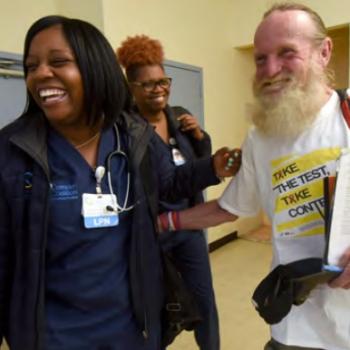Our Goal
We wanted to improve how primary care is delivered to vulnerable populations in New Jersey.
The Importance of Primary Care
Vulnerable populations are disproportionately affected by chronic health conditions and behavioral health issues. They often lack timely access to care and face a fragmented system of healthcare services that is difficult to navigate without help.

Primary care physicians are typically a patient’s first contact with the healthcare system. They provide preventive services, identify health issues in the early stages, and help manage and coordinate the care of chronic health conditions. They can also help patients identify and address behavioral health issues like mental health and substance abuse, which are often treated separately in different health care systems.
A fully integrated system of healthcare that addresses individuals’ physical and behavioral health needs can improve health outcomes, reduce healthcare costs, and, most importantly, improve the overall health and well-being of patients.
What We Did
We sought out the most effective, evidence-based models of primary care delivery and funded projects to bring these models to patients who needed them. We believed that a model delivering accessible, quality care at lower costs to patients was successful if it could be scaled, replicated, and sustained into the future.
Examples of our work in this area included:
- Supporting the integration of behavioral healthcare within primary care settings by bringing the Tennessee-based Cherokee Health Systems model to six primary care clinics and practices in New Jersey that serve a high percentage of Medicaid patients.
- Bringing innovation to New Jersey’s primary care safety net by funding the Center for Care Innovations to work with two New Jersey hospitals to develop an approach and implementation plan for an Innovation Center, and ultimately partnered with one organization to launch an Innovation Center.
- Helping Rutgers University develop and implement an ambitious plan to create a new model for integrated medical and behavioral health training and education, with a goal of better preparing current and future practitioners to deliver integrated care to patients.
